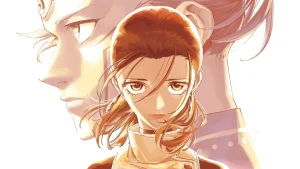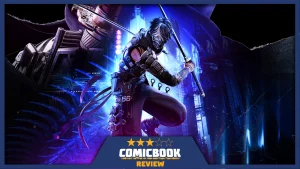The Marvel Cinematic Universe is an unprecedented experiment in modern Hollywood, a sprawling narrative told across more than fifteen years of films and television shows. The project transformed the film industry, proving that audiences were not just willing but eager to follow a long-form story that rewarded their attention to detail and investment in a shared reality. This approach allowed Marvel Studios to build a universe where a street-level hero from New York could logically stand alongside a cosmic god from another dimension, all while telling individual stories that contributed to a larger saga. The result is a cinematic tapestry that has redefined blockbuster entertainment for an entire generation.
While each film and series in the MCU focuses on an individual adventure, some key scenes were specifically designed to serve the grander plot of the universe. These are the crucial moments that connect seemingly separate plotlines, define the rules of reality, and signal to the audience that everything is about to change, either recontextualizing everything that has come before or setting the stage for every story that will follow. These plot moments represent the boldest swings in Marvel’s ambitious narrative.
The scene in Guardians of the Galaxy where the team brings the Power Stone to Taneleer Tivan, The Collector (Benicio Del Toro), is a pivotal moment of cosmic exposition. For the first time, the audience is given a clear and concise explanation of the Infinity Stones, their origins at the dawn of the universe, and the immense power they represent. Before this, the Stones were presented as separate artifacts like the Tesseract and the Aether, but this scene codifies them as a single, universe-ending threat. The Collector’s presentation establishes the specific goal of the Infinity Saga, making it clear to viewers exactly what the heroes will be fighting to protect and what a villain like Thanos (Josh Brolin) would be seeking. This explicit lore dump was essential for unifying the disparate plot threads of Phases One and Two into a focused narrative.
After the Avengers successfully defeat Loki (Tom Hiddleston) and his Chitauri army in the Battle of New York, the film’s mid-credits scene delivers a game-changing reveal. The Other (Alexis Denisof) reports Loki’s failure to a mysterious, purple-skinned figure, who turns to the camera with a confident smirk. This was the first time audiences were introduced to Thanos (played by Damion Poitier then), the Mad Titan. The moment is an effective piece of narrative foreshadowing, establishing that a far greater threat was pulling the strings from the shadows. It immediately raised the stakes of the entire MCU, promising a cosmic-level antagonist who would dwarf the threat of a single Asgardian prince. The reveal of Thanos set the course for the next seven years of storytelling, giving the audience and the heroes a clear ultimate villain.
The central plot twist in Captain America: The Winter Soldier is arguably the most significant status quo shift in the history of the Marvel Cinematic Universe. The revelation that SHIELD, the global intelligence and peacekeeping organization that formed the Avengers, had been secretly controlled by the fascist organization HYDRA was a stunning turn. This development completely recontextualized every preceding film, revealing that the heroes’ primary support system was, in fact, their greatest enemy. The fall of SHIELD shattered the political landscape of the MCU, forcing the Avengers to operate as an independent entity and leaving the world vulnerable. It was a bold narrative move that demonstrated the franchise’s willingness to tear down its own established world in the service of a compelling story.
The season one finale of Loki serves as the official beginning of the Multiverse Saga. In a climactic confrontation, Loki (Tom Hiddleston) and his variant Sylvie (Sophia Di Martino) meet He Who Remains (Jonathan Majors), the architect of the Sacred Timeline. His detailed explanation of variants, multiversal war, and his role in pruning timelines to maintain order serves the exact same narrative function that The Collector’s scene did for the Infinity Stones, establishing the core conflict for the next phase of the MCU. In addition, Sylvie’s decision to kill him and unleash the multiverse is the inciting incident for the chaos of projects like Spider-Man: No Way Home and Doctor Strange in the Multiverse of Madness. This single scene pivots the entire franchise from a cosmic narrative to a multiversal one, defining the rules of the new playground.
The most important plot moment in the entire Marvel Cinematic Universe is also its first. The post-credits scene of 2008’s Iron Man was a truly audacious gamble that paid off in spectacular fashion. After Tony Stark (Robert Downey Jr.) publicly declares his identity, he returns home to find Nick Fury (Samuel L. Jackson) waiting in his living room. Fury’s line about being there to talk to him about the “Avenger Initiative” is the single most foundational sentence in the franchise’s history. Before this moment, Iron Man was simply a successful superhero movie. However, Fury’s appearance was a direct promise to the audience that this film was the start of something much bigger, a shared universe of heroes that would one day assemble. It is the moment that created the MCU as a concept, transforming a standalone film into the first chapter of an epic.
Which other Marvel Cinematic Universe moment do you think was a major turning point? Leave a comment below and join the conversation now in the ComicBook Forum!
The post 5 Most Important Marvel Plot Moments in the MCU appeared first on ComicBook.com.




